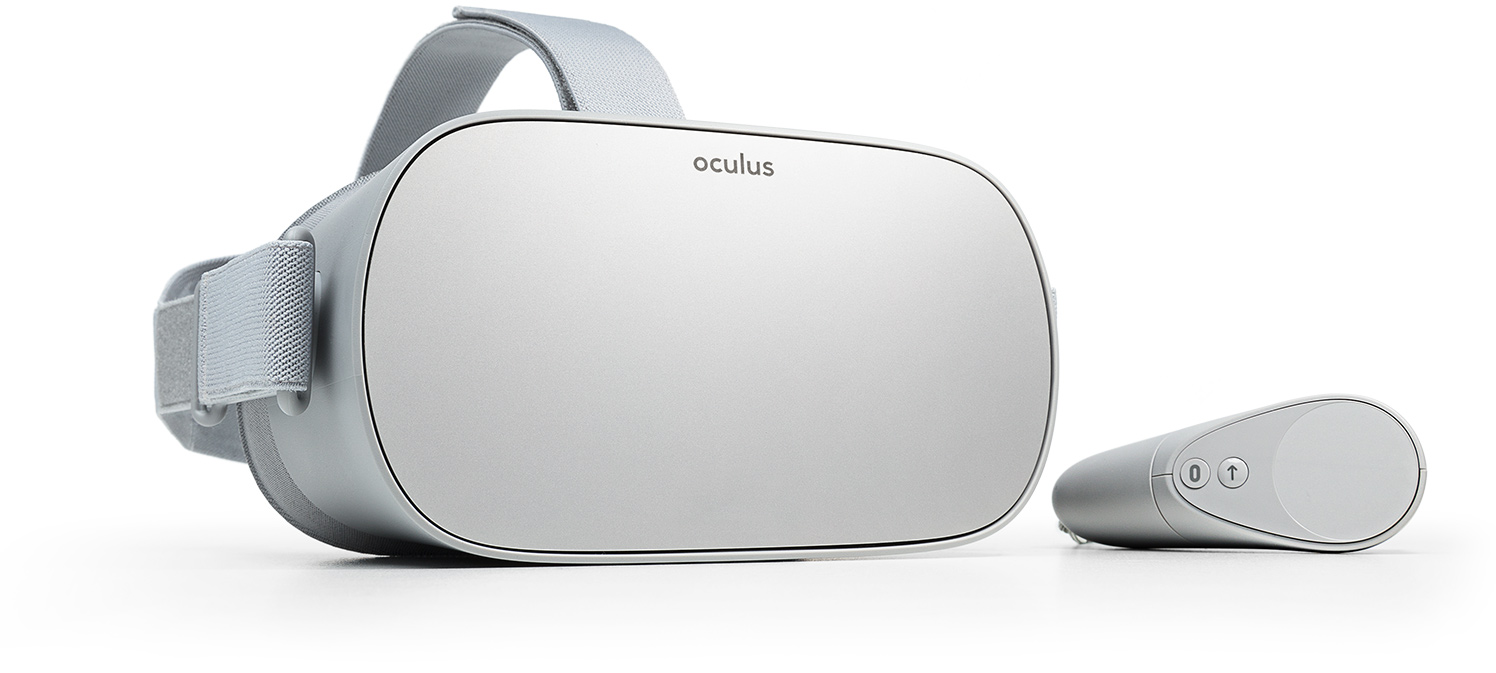Expensive hardware costs have historically been cited as a factor behind VR’s slow but steady adoption among U.S. consumers – and this trend seems set to continue into the near future, with HTC recently unveiling their new professional-grade Vive Pro headset alongside its professional-grade price point: $799. While HTC attempts to corner the high-end, premium VR market, its primary competitor Oculus is pursuing a different strategy, namely a focus on making their virtual reality hardware as accessible and affordable as possible. Meet their secret weapon: the $199 Oculus Go.

Releasing on an imminent-yet-undetermined “early 2018” date, the Oculus Go is an all-in-one VR headset with comparable specs to the existing Samsung Gear VR. However, unlike both its mobile and PC-powered headset competitors, the Oculus go operates as an entirely standalone device – meaning there’s no need to carry around a specific smartphone model or high-end laptop wherever you want to use the Oculus Go. All of the necessary hardware components needed to offer viewers a high-quality, interactive VR experience are housed inside of the headset itself – a massive leap forward for accessible, consumer-facing VR technology.
But that’s not the only new feature this headset has to offer. The Oculus Go features improved lenses and screen resolution when compared to its PC-powered big brother the Oculus Rift (2560 x 1440 vs. 2160 x 1200, respectively), which Oculus touts will result in significantly reduced glare and “screen-door effect” among users. Additionally, the headset features built-in speakers for an immersive spatial audio experience, though serious users may want to take advantage of the Go’s 3.5mm audio jack and use their own headphones for optimal experience. The all-in-one headset includes 32GB of internal storage, allowing users to store numerous 360° games, apps, and videos directly on the device.
All that being said, these mobility and convenience features come with some trade-offs. Unlike the Oculus Rift’s Touch controllers which offer precise hand movements and positional tracking as inputs, the controller included with Oculus Go is most similar to the Samsung Gear VR controller, which essentially functions as a point-and-click remote (think laser pointer). Without the type of external motion tracking we see in high-end VR devices, the Oculus Go and other headsets in its tier will continue to offer simplified control schemes until we find a new approach to tracking body motion and gestures. While the inclusion of a controller allows for an enhanced experience over simpler devices like Google Cardboard, those seeking only the most truly immersive, embodied VR experiences are likely better off looking at higher tiers of the VR category.
So while the Go’s similarities to the Gear VR create some limitations, those similarities also create some advantages – namely, the fact that Oculus promises over 1,000 experiences will be available for Go users to try at launch, many of which being ports of existing Samsung Gear VR titles. With tons of highly rated games, apps, and experiences already available to download along with exciting upcoming releases like our very own Breaking Boundaries in Science coming soon, now is a the perfect time to dive right in to the Oculus ecosystem.
While the device may not be the most powerful VR headset on the market, it does have one unique advantage that separates it from the competition: an affordable $199 price tag. With the release of the Oculus Go, it’s clear that Oculus is less interested in seeing how far they can push the limits of their hardware, rather focusing on how they can make VR technology more widely accessible to audiences of all types. An exciting future for the technology, indeed.